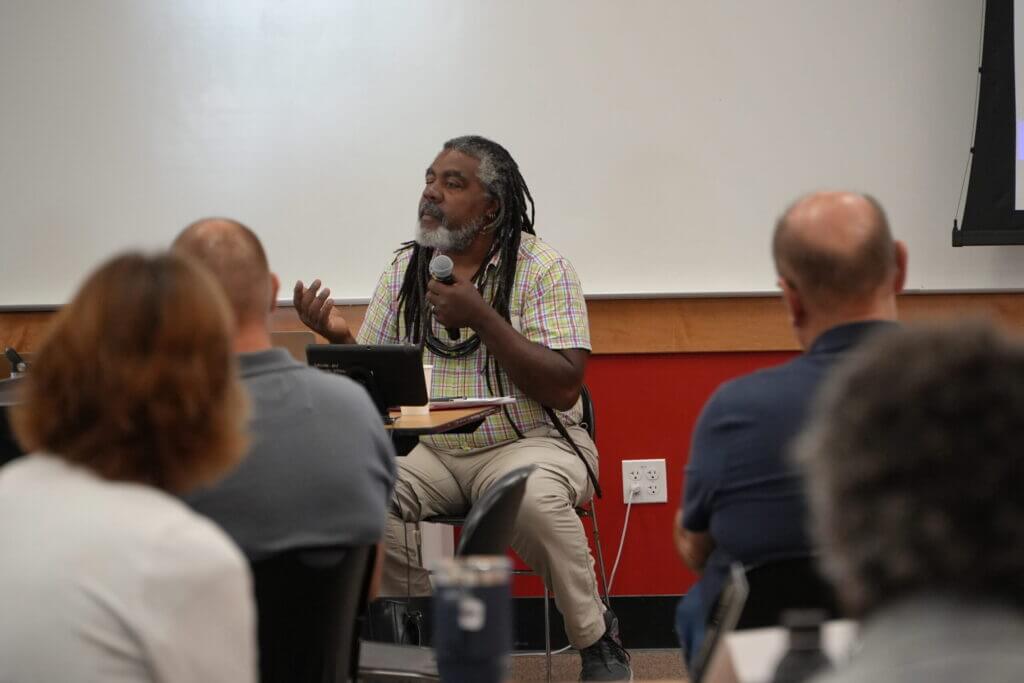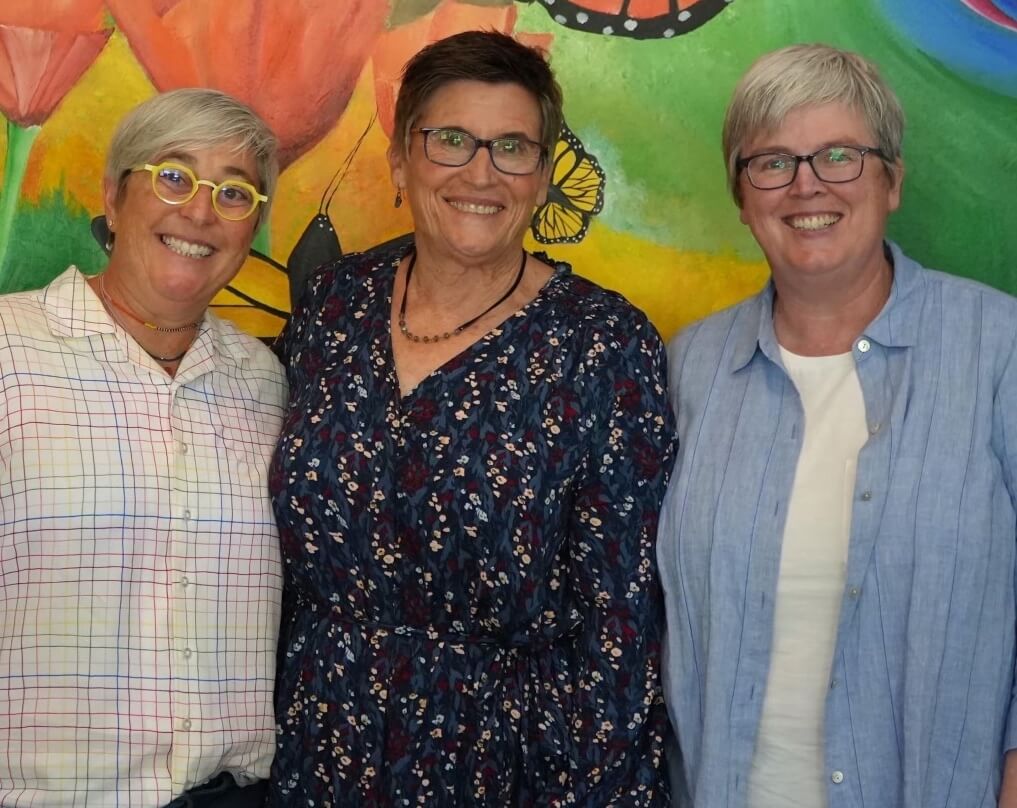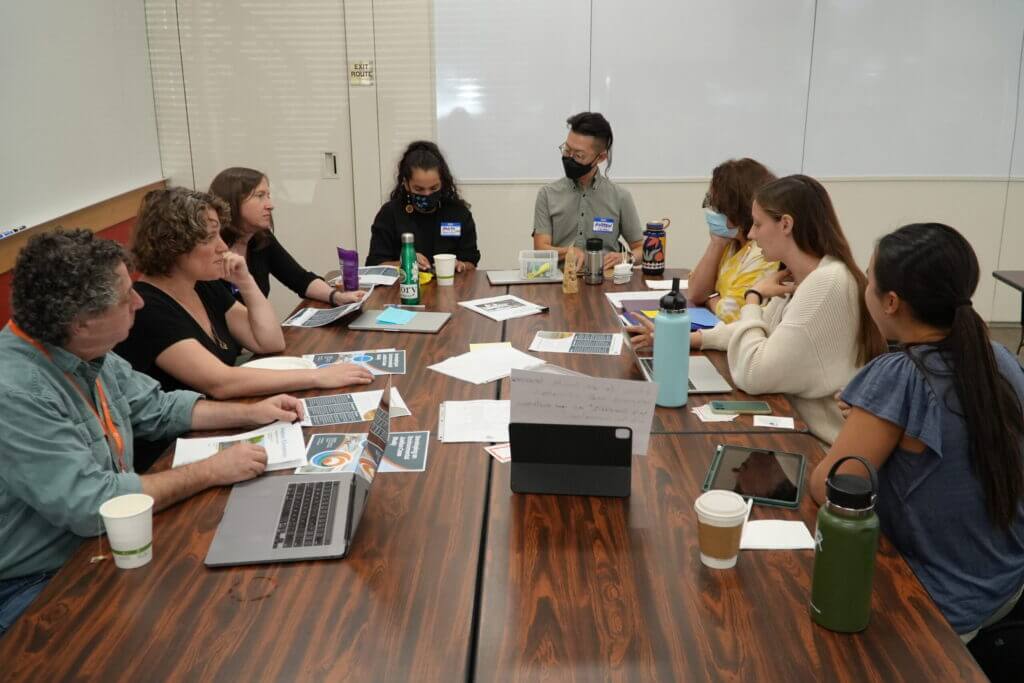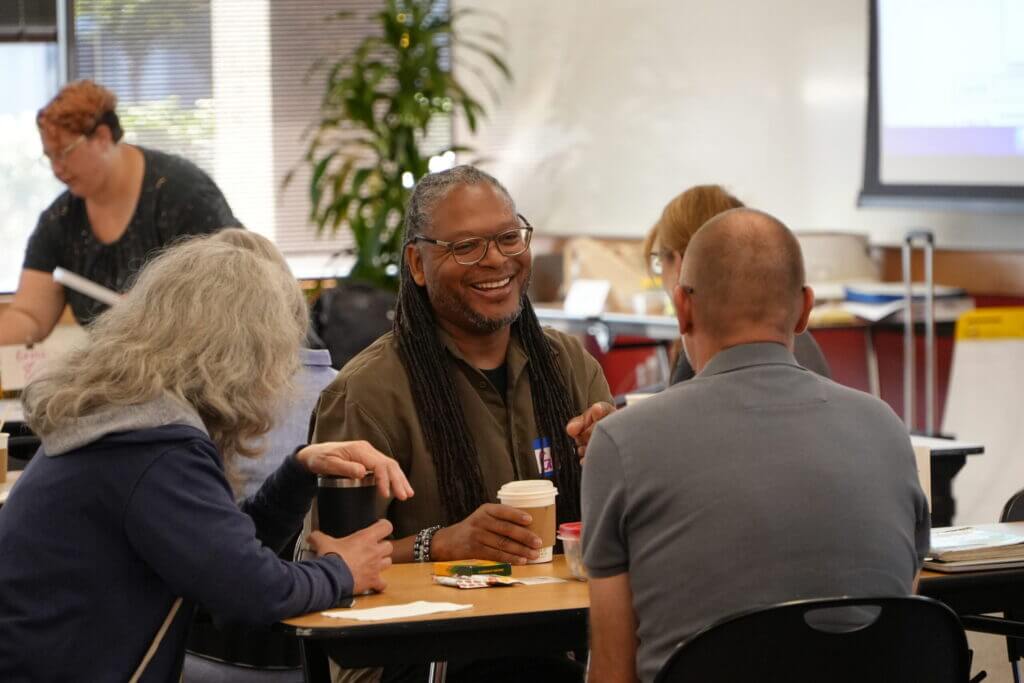It has been useful to have a few weeks of distance to reflect on all that took place at this year’s convening of the Climate Change and Environmental Justice Program (CCEJP) writing retreat. It was only the second time in two years that the majority of the writing teams could meet in person. It was great reconnecting with our colleagues and welcoming new writers and learning collaborators into the team.
Once the eight writing teams were all together, it became even more evident that the weight and responsibility of crafting this unprecedented K–12 exploration of climate change and climate justice for California students was real. The desire to “get it right,” especially as teams were working to complete and submit the first full drafts of their units, was palpable. The tremendous excitement and possibility balanced the collective angst expressed about being a part of this project and the enormous change it could usher in once the project is fully executed and aminated in classrooms across the state.

Holding tension became an undergirding theme of our three days of shared learning, problem-solving, revising, and visioning forward. As was the case with the 2022 CCEJP launch, our shared experience was thoughtfully designed and fruitful on many levels. Balancing urgency with intentionality, aspiration with pragmatism, production with the process, and the particular with the universal can be challenging. However, when done well, the transformational power of design for deep collaboration becomes evident.
Day one of our gathering set the tone for our time together. We were gifted with the presence of and an address by special guest Sharon Olken from the California State Board of Education, who took the time out of her busy day to see what we were up to and offer her support and encouragement. After reconnecting, an inspirational opening, and a review of the day’s logistics, we settled into deeper reflection on centering community as an environmental justice strategy.
As in nature, we are more intelligent, resilient, and adaptable as a collective, though we rarely find ourselves in environments that reflect this reality. As community agency and action are the desired outcomes of this project, it felt important to engage with some shared learning that would help establish shared concepts that could be woven into our conversations, habits of mind, and, ultimately, the curriculum.

All participants read the thought-provoking article “Decolonization is not a metaphor” by Eve Tuck and K. Wayne Yang. Our understanding was expanded and deepened in a discussion led by Dina Gilio-Whitaker, MA. She grounded the discussion with shared terms and a thorough explication of the concept of decolonization and how it differs in distinct ways from other social justice and human rights-based projects. Her overview of past efforts to diminish the implications and accountability of the violence inherent in colonialism was particularly resonant with the writing teams as they grappled with the impacts of climate change on the most vulnerable communities.
I followed her session by inviting the teams to consider how habituating anti-racist mindsets, rather than moving towards taking anti-racist actions, would offer a more generative path forward. It is common to say that race is a social construct. However, revising one’s schema enough for this understanding to become an analytical lens or prevailing worldview is highly unusual. I reminded the community that many of the early environmentalists were eugenicists. Their belief that natural and human communities were organized hierarchically is something we have all been socialized to accept. Revising these epistemological commitments takes time, but when successful, it allows us to see the world as it is rather than how we have been conditioned to view it.
There were important distinctions to be made between the two presentations, but one shared admonishment was that few quick fixes exist for the existential challenges presented by climate change. Marshaling effective and collective responses to climate change will take time, political will, and a sense that change is possible. The hope in presenting these concepts is that as they inform the work and thoughts of the writing teams, they will recognize that the CCEJP community is building a curricular structure that invites new learning and new possibilities and has the potential to rekindle the civic imagination of California students and educators alike. Spending the time to engage in this shared learning and to do so collaboratively strengthened our connections and willingness to take risks with each other.

Elisabeth Hensley from the CCEJP evaluators, RTI International, closed the day with a thoughtful overview of how the curricular units would be field-tested and evaluated. Her overview was followed by a lively Q&A session as teams sought answers on some of what was covered, as well as implications for them and their writing process. Some urgency crept back into the room during these exchanges due to the complexity of gathering feedback about the effectiveness of the curricular resources while simultaneously continuing to develop those resources. However, there was also a growing sense that we were working as a collective. The day concluded with an overview of the peer feedback process we would engage in for most of the second day.
By the start of day two, the teams were primed to engage. Many teams were at the point where peer feedback would be beneficial to their writing process. The thoughtful engagement and relational bonding on day one left participants open and receptive to feedback from their peers. Receiving critique requires some vulnerability, humility, and trust. Once again, the thoughtful design of the day assisted in making the peer feedback process safe and generative.

Most of the day was set up for teams to receive feedback on their units. Teams were strategically paired so that they were in conversation with the group whose unit either preceded or followed theirs. Teams were also joined by their coaches, supporting anchor organizations, and a facilitator, whose role was to direct the process and impose structure to assist the teams in staying focused and identifying the most critical or urgent challenges each writing team faced. Nearly four hours were allocated to this process, allowing each writing team to settle in and be supported by its coaches and partnered writing team.
Though they can sometimes feel stilted, structures like the adapted Consultancy Protocol provide an opportunity for deep meaning-making. The teams were attentive to each other’s needs, asked thoughtful, generative questions, and offered sage advice. In some cases, teams found the clarity they were seeking, while others emerged with more wondering.
Teams were briefed on the peer feedback process in the afternoon, and a lively discussion ensued. Many communicated gratitude for the process and the care that each team, their coaches, and facilitators took in shepherding them through the process. Some articulated a range of ways in which their thinking had been expanded and new connections they could foster. Others began to speak to their hopes and aspirations for this project and the life it will live both within classrooms walls and beyond.

What became evident was that a burgeoning understanding had revealed the connective tissue between the units, some even seeing these linkages to units beyond those directly adjacent to theirs. As the conceptual connections between the units became more apparent, excitement grew, and we made a palpable pivot back into the promise and possibility we were co-creating, leaving the urgency of production behind, if only for a few moments.
On day three, we had an opportunity to reconnect with some of the first day’s learning. We revisited land acknowledgments and engaged in a discussion of why these practices can be powerful. We also explored how fraught the practice can be if reduced to performative gestures and done without knowledge of place and people or centered as a tactic of avoidance. Several references to Dina’s talk and the Tuck and Yang article surfaced during exchanges, providing further evidence of the sincere and earnest way our community had shown up and come together over the past few days.
The journey continues for our writing teams. As they work to complete the first draft of their unit in the coming weeks, we will be organizing additional review and feedback sessions. We are grateful to the writing teams and our anchor organizations for their dedication to ensure that the curricular resources developed are culturally relevant and include the voices of youth statewide, Indigenous perspectives, and experiences of people who have already been disproportionately impacted by climate change.


One Response
Milton, WOW again. I am so intrigued and cannot wait to read the outcome of the work. I even wished that I was there in person to experience that energy. Thanks!